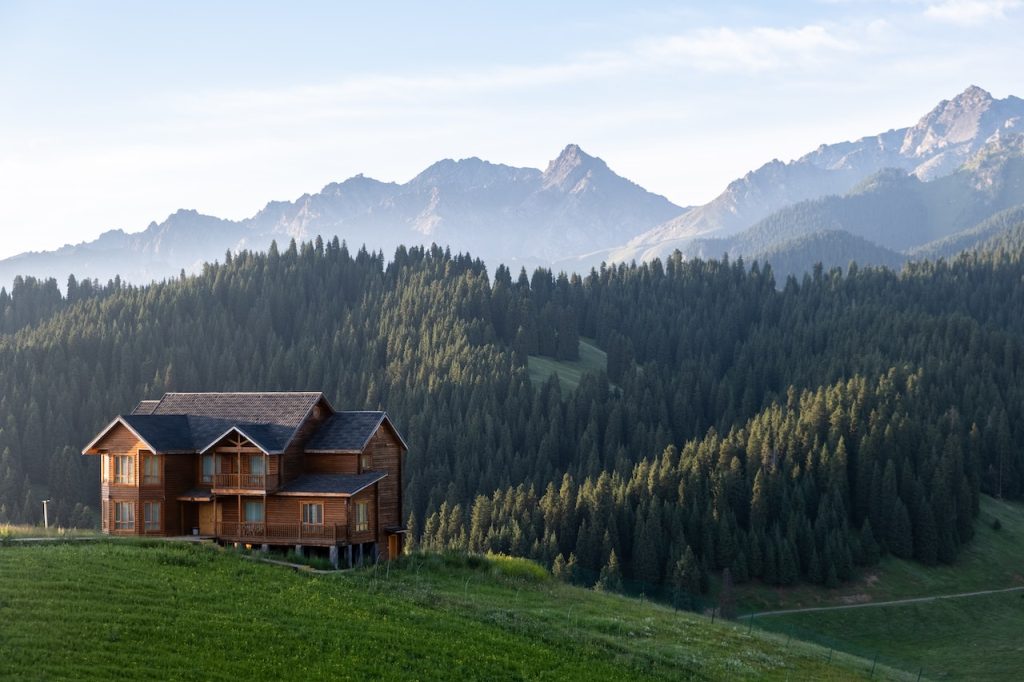# From Soil to Skyline: The Principles of Sustainable Garden Architecture
Picture this: The sun rises gently over a sea of green, dew shimmering on the leaves like nature’s jewels. Each day, I step into my garden, surrounded by vibrant blooms, buzzing pollinators, and the earthy scent of damp soil. This sanctuary is not just a haven for nature; it embodies the principles of sustainable garden architecture, reimagining how we interact with our environment. By weaving together the natural world with design principles, we create spaces that are both functional and beautiful, fostering a sense of unity that leaves a lasting impact on our daily lives.
**What is Sustainable Garden Architecture?**
At its core, sustainable garden architecture harmonizes human design with natural ecosystems. It prioritizes environmental health while optimizing the aesthetics and functionality of a garden space. It’s an approach that respects our planet’s limits, embraces biodiversity, and champions resilience in design. The principles drawn from this concept can transform mere gardening into an art form that supports environmental stewardship and self-sufficiency.
### The Core Principles of Sustainable Garden Architecture
1. **Embracing Biodiversity**
Biodiversity is the backbone of any thriving ecosystem. In a sustainable garden, variety is not only the spice of life but the foundation of resilience. Planting diverse species encourages beneficial insects, promotes pollination, and builds a robust food web. Incorporate native plants, which are adapted to local conditions and provide habitat for local wildlife, enhancing your garden’s role within the ecosystem.
2. **Soil Health**
Healthy soil is the lifeblood of any garden. Techniques such as composting, mulching, and the incorporation of organic amendments will improve soil structure, enhance nutrient availability, and promote beneficial microbial activity. A thriving soil ecosystem leads to vigorous plant growth and decreased need for synthetic fertilizers. Furthermore, practicing crop rotation and cover cropping can tremendously improve soil fertility over time.
3. **Water Conservation**
Smart water management strategies are essential. Techniques like rainwater harvesting, creating swales, and utilizing drip irrigation allow for efficient water use while minimizing run-off. Additionally, selecting drought-tolerant plants can drastically reduce water needs, making gardens more resilient in times of low rainfall.
4. **Energy Efficiency**
Positioning plants wisely can reduce energy costs. Strategically placed trees can provide shade and windbreaks, minimizing heating and cooling demands for nearby structures. Garden architecture can also embrace solar energy, utilizing panels and other technologies to source renewable energy for lighting and other garden utilities.
5. **Creating Habitats**
Sustainable gardens serve as vital habitats for a variety of species. Incorporating features such as nesting boxes for birds, bee hotels for pollinators, and water features can attract a rich array of wildlife. This not only enhances biodiversity but creates a lively ecosystem that enriches both flora and fauna.
6. **Waste Reduction**
A truly sustainable garden minimizes waste through recycling, composting, and utilizing organic materials. From reusing garden clippings as mulch to upcycling materials in innovative ways, it’s about fostering a mindset of resourcefulness. This not only contributes to environmental health but also encourages creativity and innovation in design.
### Design Strategies for Sustainable Gardens
When it comes to translating these principles into design, there are endless possibilities. Here are some effective strategies:
– **Permaculture Design:** This holistic approach mimics natural ecosystems, encouraging a self-sustaining garden model that works with nature rather than against it. Key elements include zone planning for efficient energy use and guild planting for synergistic relationships among plants.
– **Vertical Gardening:** In urban spaces, where land is limited, vertical gardens use walls to grow vibrant plant life, maximizing space while minimizing land use. These can also improve air quality and aesthetic appeal in an urban landscape.
– **Edible Landscaping:** Integrating food-producing plants into the landscape not only beautifies an area but also encourages self-reliance. Imagine a front yard brimming with herbs, fruits, and vegetables— this can challenge traditional notions of landscaping while enhancing community engagements.
– **Natural Hardscapes:** Using natural materials for pathways, retaining walls, and structures creates a harmonious transition between built spaces and nature. Local stone, reclaimed wood, and permeable pavers allow rainwater infiltration, reducing runoff and promoting groundwater recharge.
### Pro Tips for Creating Your Sustainable Garden
1. **Plan for Success:** Sketch out your garden design, including plant placements, pathways, and garden features. Think about sunlight, water access, and the relationships between plants.
2. **Start Small:** If you’re new to sustainable gardening, begin with a small section of your yard or an indoor container garden. Gradually expand as you gain confidence and skills.
3. **Connect with Nature:** Immerse yourself in your garden space, observing how plants and wildlife interact. This deep connection will inspire your design and enhance your appreciation for biodiversity.
4. **Educate Yourself and Others:** Read books, attend workshops, and engage with local gardening groups to cultivate knowledge. Share what you learn within your community to inspire others to embrace sustainable practices.
5. **Keep a Garden Journal:** Documenting what works and what doesn’t will help refine your approach. Include notes on plant growth, pest management, and seasonal changes to track your progress.
### The Future of Sustainable Garden Architecture
As the global conversation around environmental sustainability intensifies, the principles of sustainable garden architecture are more important than ever. Our gardens can serve as beacons of hope, inviting community engagement and nurturing resilience against climate change. With innovative approaches and a commitment to harmonious living, we can create beautiful spaces that not only enrich our lives but also honor and restore the natural world.
Ultimately, the journey of sustainable garden architecture invites us to rethink how we connect with our environment. By embracing biodiversity, enhancing soil health, conserving water, and celebrating nature, we can cultivate gardens that inspire and sustain, creating a legacy of beauty for generations to come.
So whether you’re planting a few herbs on your balcony or designing an expansive garden space, remember: Each seed sown and every design choice made is a step toward a more sustainable future. Together, we can transform our urban landscapes into thriving ecosystems—bridging the gap from soil to skyline.



